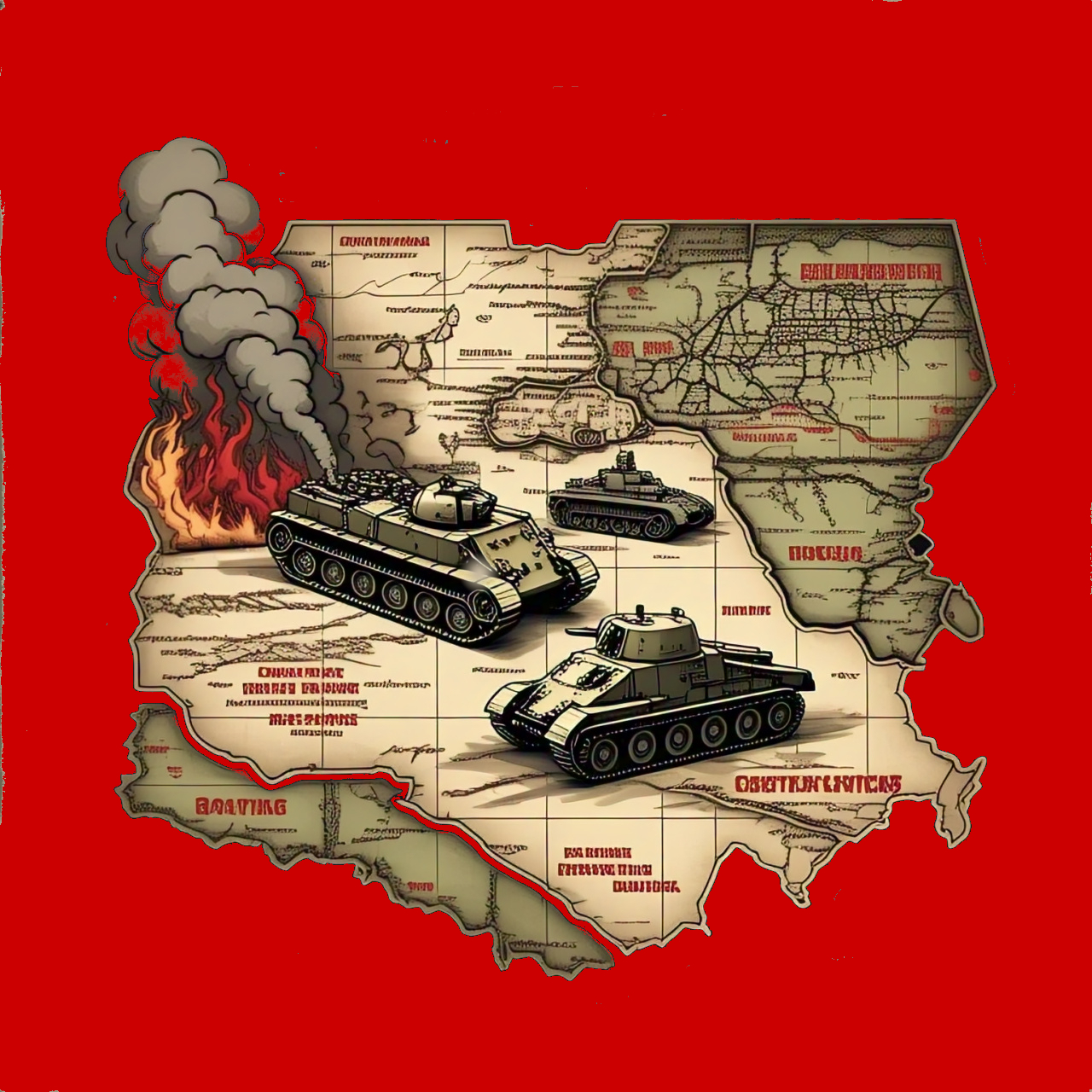Southwestern Front
The Soviet Union formed the Southwestern Front on 22nd June 1941, from the Kiev Special Military District. Commanders organized its forces to counter the German Army Group South during Operation Barbarossa. The front included the 5th, 6th, 26th, and 12th Armies, engaging in significant battles like Uman and Kiev.

Commanders
Colonel General Mikhail Kirponos, 22nd June 1941 to 20th September 1941

Colonel General Mikhail Kirponos commanded the Southwestern Front during Operation Barbarossa, leading Soviet forces against German Army Group South. He organized defensive operations in Ukraine, including the Battles of Uman and Kiev. Kirponos displayed remarkable leadership but tragically died on 20th September 1941, while attempting to break out of the Kiev encirclement.
Marshal Semyon Timoshenko, 30th Sept 1941 to 18th December 1941

Marshal Semyon Timoshenko commanded the Southwestern Front during critical battles, including the Battle of Moscow, against German forces. He led the 40th, 21st, 38th, and 6th Armies, organizing defensive and offensive operations. Timoshenko’s leadership significantly impacted Soviet resistance, contributing to halting German advances temporarily during the early stages of World War II.
Lieutenant General Fyodor Kostenko, 18th December 1941 to 8th April 1942

Lieutenant General Fyodor Kostenko commanded the 26th Army within the Southwestern Front during critical early World War II battles. He led defensive operations against German advances, showcasing strategic acumen and resilience. Kostenko tragically went missing on 26th May 1942, during the Second Battle of Kharkov, leaving a legacy of dedicated military service.
Marshal Semyon Timoshenko, 8th April 1942 to 12th July 1942

Marshal Semyon Timoshenko commanded the Southwestern Front during critical battles, including the Battle of Moscow, against German forces. He led the 40th, 21st, 38th, and 6th Armies, organizing defensive and offensive operations. Timoshenko’s leadership significantly impacted Soviet resistance, contributing to halting German advances temporarily during the early stages of World War II.
Lieutenant General Nikolai Vatutin, 25th October 1942 to 27th March 1943

Lieutenant General Nikolai Vatutin commanded the Southwestern Front, leading Soviet forces during critical World War II operations. He organized offensives against German troops, showcasing strategic brilliance and determination. Vatutin played a significant role in the Battle of Stalingrad and the liberation of Kiev, leaving a lasting legacy in Soviet military history.
Colonel General Rodion Malinovsky, 27th March 1943 to 20th October 1943

Colonel General Rodion Malinovsky commanded the Southwestern Front, leading Soviet forces during pivotal World War II operations. He organized strategic offensives, including the Dnieper–Carpathian Offensive, showcasing exceptional leadership. Malinovsky played a crucial role in liberating Ukraine and advancing Soviet positions, leaving a significant legacy in Soviet military history.
Active
- 22nd June 1941 to 12th July 1942
- 22nd October 1942 to 20th October 1943
Engagements
- Operation Barbarossa
- Battle of Moscow
- Second Battle of Kharkov
- Operation Little Saturn
- Third Battle of Kharkov
- Donbas Strategic Offensive
Army Composition
History

The Southwestern Front played a pivotal role during Operation Barbarossa, facing the German Army Group South’s aggressive advances. Commanders organized the 5th, 6th, 26th, and 12th Armies to defend Ukraine’s western regions. Despite their efforts, the front suffered devastating losses at the Battles of Uman and Kiev, losing key personnel.
Reformed after initial defeats, the Southwestern Front participated in the Battle of Moscow under Marshal Timoshenko’s leadership. Forces included the 40th, 21st, 38th, and 6th Armies, engaging in critical defensive and offensive operations. The front’s contributions significantly impacted the Soviet Union’s ability to halt German advances temporarily.
In 1942, the Southwestern Front disbanded, transferring its forces to the Stalingrad and Southern Fronts. Re-established later that year, it played a crucial role in the Battle of the Dnieper and Kiev’s liberation. Renamed the 3rd Ukrainian Front in 1943, it continued contributing to Soviet victories.
Gallery



Other blog categories that may be of interest. 10mm ACW Project, 10mm AWI Project, 10mm AZW Project, 10mm CGW Project, 10mm FIW Project, 10mm Sci-Fi Projects, Aliens, Dropzone Commander, Terra Nova, 10mm WWI Project, 10mm WWII Project, 10mm Zombie Project, Battle Reports & Scenarios, Making Scenery & Terrain, Painting Guides, Shows & Events, Solo Wargaming, Wargaming Projects, Wargaming Rules.


Leave a Reply